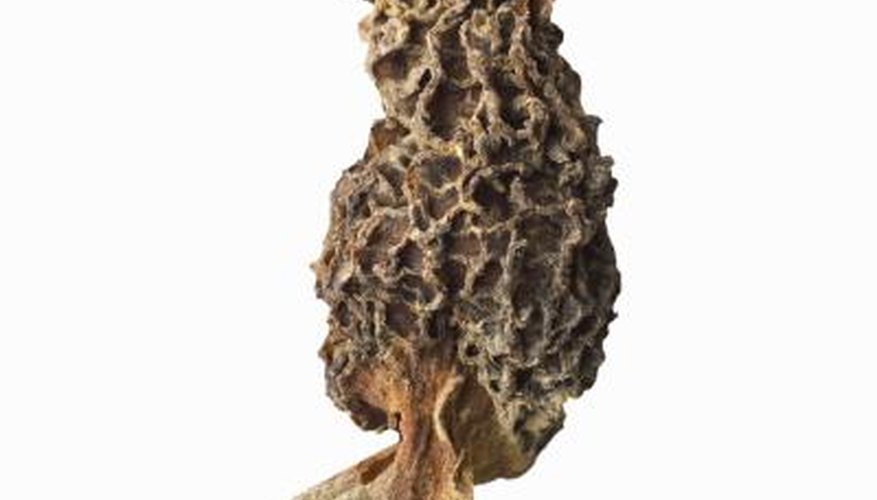Most plants are unable to grow beneath beech trees, as the branches and foliage of the trees form impenetrable canopies, preventing sunlight from reaching the ground below. In addition, the roots of beech trees can steal moisture away from the roots of potential plant neighbours. However, the dark conditions that often prevail under beech trees are ideal for another type of organism: fungus. In addition to moulds and mildews, several types of mushrooms can grow under beech trees. Some are edible, but you must have a mushroom expert identify the mushrooms before you eat them. Many poisonous mushrooms look similar to edible mushrooms.
Morels
Morels are edible mushrooms that grow -- for the most part -- east of the Great Plains; however, some species also thrive in the forests of the Pacific Northwest. The mushrooms have light-coloured stalks and tall, dark caps. These caps have distinctive, irregular surfaces that are covered with a textural, honeycomb-like pattern. Species of morel include the common morel, Morchella esculenta, which has yellowish-brown ridges on its cap, notes the Missouri Department of Conservation, and the black morel, Morchella elata, which has nearly black ridges on its cap when fully mature. Morels grow on forest floors, attaching themselves to tree roots. In addition to growing beneath beech trees, the mushrooms commonly grow on oak, poplar and tulip trees.
- Morels are edible mushrooms that grow -- for the most part -- east of the Great Plains; however, some species also thrive in the forests of the Pacific Northwest.
- In addition to growing beneath beech trees, the mushrooms commonly grow on oak, poplar and tulip trees.
Oyster Mushrooms
As the University of Wisconsin notes, the edible oyster mushroom, Pleurotus ostreatus, derives its names from its white colour and shell-like appearance, not its taste. A native of Asia, the mushroom has a broad, lopsided cap, which covers a small, inconspicuous stem. However, in some instances oyster mushrooms will grow without stems. The taste of the mushrooms ranges from mild to strong, while their texture ranges from soft to chewy. Some strains of oyster mushroom even have sweet flavours and smell like liquorice, according to the University of Wisconsin. Oyster mushrooms grow in clusters on the bases of deciduous trees and logs. In addition to growing on beech trees, oyster mushrooms also commonly grow on birch, oak, elm and maple trees.
- As the University of Wisconsin notes, the edible oyster mushroom, Pleurotus ostreatus, derives its names from its white colour and shell-like appearance, not its taste.
Porcelain Mushrooms
The porcelain mushroom, Oudemansiella mucida, grows specifically on the dead trunks and fallen branches of beech trees and can sometimes grow on living beech trees, according to First Nature. Also known as poached egg fungus, the white-coloured mushroom has a tall, narrow stem with a prominent stem ring -- or raised band of flesh -- running around it. The cap of the mushroom is rounded and dome-like. While the top of this cap is often slimy, the bottom has several gills that radiate outward from the mushroom's stem. Porcelain mushrooms are edible, but their flesh is very thin and you must peel a layer of skin from their caps prior to eating them.
- The porcelain mushroom, Oudemansiella mucida, grows specifically on the dead trunks and fallen branches of beech trees and can sometimes grow on living beech trees, according to First Nature.
- While the top of this cap is often slimy, the bottom has several gills that radiate outward from the mushroom's stem.
